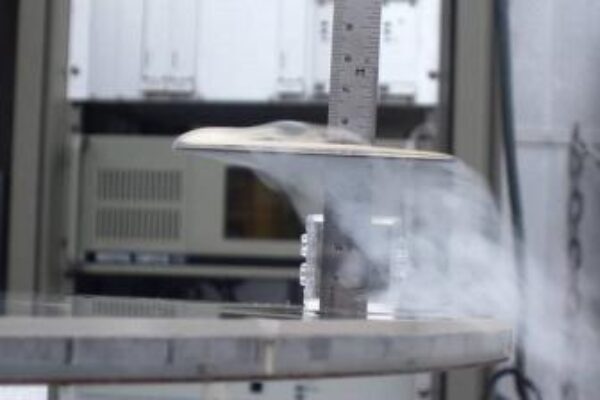
Innovative superconductor fibers carry 40 times more electricity
Dr. Boaz Almog and Mishael Azoulay working in the group of Prof. Guy Deutscher at TAU’s Raymond and Beverly Sackler School of Physics and Astronomy have developed superconducting wires using fibers made of single crystals of sapphire to be used in high powered cables. Factoring in temperature requirements, each tiny wire can carry approximately 40 times more electricity than a copper wire of the same size
High power superconductor cables take up much less space and conduct energy more efficiently, making them ideal for deployment across grids of electricity throughout a city. They will also offer a more effective method for collecting energy from renewable sources, such as solar and wind energy. Superconducting wires can also be used for energy storage and enable devices which enhance grid stability.
To create their superconductors, the researchers turned to sapphire fibers, developed by Dr. Amit Goyal at the Oakridge National Lab in Tennessee and lent to the TAU team. Coated with a ceramic mixture using a special technique, these single-crystal fibers, slightly thicker than a human hair, have made innovative superconductors.
Dr. Almog is currently working to produce better superconductors that could transport even larger amounts of electric current. One area where such superconductors could lend a hand is in collecting renewable energy sources. "Sources such as wind turbines or solar panels are usually located in remote places such as deserts or offshore lines, and you need an efficient way to deliver the current," explains Dr. Almog. These superconductors can traverse the long distances without losing any of the energy to heat due to electrical resistance.
Superconducting cables could also be an efficient way to bring large amounts of power to big cities "If you want to supply current for a section of a city like New York, you will need electric cables with a total cross-section of more than one meter by one meter. Superconductors have larger current capacities using a fraction of the space," says Dr. Almog. Different parts of a city could be cross-wired, he adds, so that in the event of a blackout, power can be easily rerouted.

This is a demonstration of "quantum trapping" in Dr. Almog’s laboratory. Credit: AFTAU
Developing a superior superconductor is only part of TAU’s mission. Dr. Almog is also dedicated to making this technology accessible and exciting as a way to capture the imagination of aspiring scientists. TAU has manufactured superconductor wafers which, filled with liquid nitrogen like their cable cousins, can be locked in place by strong magnets and levitate thanks to a phenomenon called "quantum trapping."
Visit American Friends of Tel Aviv University at www.aftau.org
 If you enjoyed this article, you will like the following ones: don't miss them by subscribing to :
eeNews on Google News
If you enjoyed this article, you will like the following ones: don't miss them by subscribing to :
eeNews on Google News




